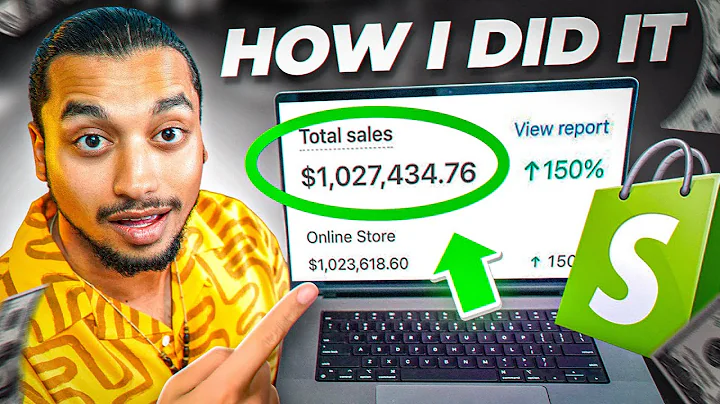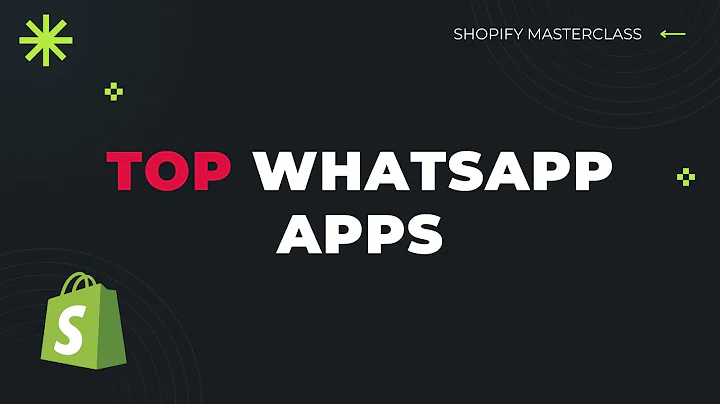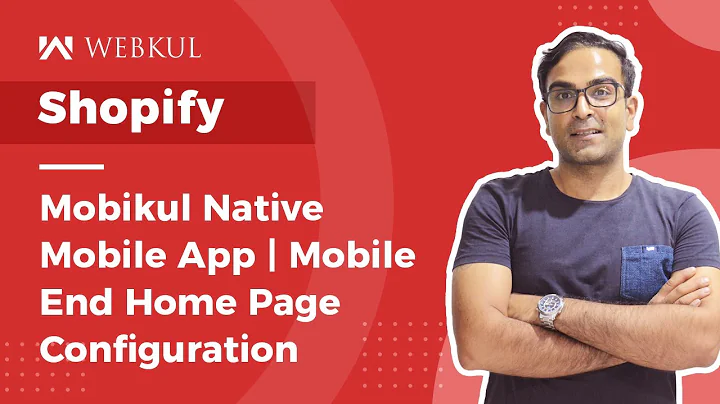Mastering Shopify Shipping: A Step-by-Step Guide
Table of Contents:
- Introduction
- Selecting a Shopify Plan
2.1 Monthly Plan
2.2 Yearly Plan
2.3 Choosing the Right Plan
- Activating Your Online Store
3.1 Disabling Password Protection
3.2 Setting up Home Page Title and Description
3.3 Social Sharing Image
- Accepting Payments
4.1 Shopify Payments
4.2 Other Payment Gateways
- Setting Up Shipping and Delivery
5.1 Shipping Prices and Zones
5.2 Local Delivery Options
- Conclusion
Launching Your Shopify Online Store: A Step-by-Step Guide
So, you've done all the hard work of setting up your products, designing your online store, and connecting your domain. Now, it's time to launch your business. But where do you start? In this article, we'll walk you through the process of selecting a Shopify plan, activating your online store, accepting payments, and setting up shipping and delivery options. By following these steps, you'll be ready to open your virtual doors and start selling to customers worldwide.
1. Introduction
Launching an online store can be both exciting and daunting. With Shopify, you have a powerful platform that takes care of the technical aspects, allowing you to focus on running your business. In this guide, we'll break down the key steps you need to take to successfully launch your Shopify online store.
2. Selecting a Shopify Plan
The first step in launching your online store is to select a Shopify plan that suits your business needs. Shopify offers different plans with varying features and pricing options. Let's explore your plan choices:
2.1 Monthly Plan: The monthly plan starts at $29, allowing you to get started with basic features. While this plan is suitable for small-scale businesses, it has limitations on staff members and locations.
2.2 Yearly Plan: By opting for the yearly plan, you can save up to 50% on your monthly fees, paying around $14 per month. This plan offers additional benefits such as more staff members and physical locations.
2.3 Choosing the Right Plan: When deciding on a plan, consider the scale and requirements of your business. If you're just starting out, the basic Shopify plan is a good option. However, if you have existing investments or anticipate rapid growth, the advanced Shopify plan might be more suitable. Carefully review the features and compare them to your business needs before making a decision.
Pros:
- Monthly plan provides a low-cost entry point for small businesses.
- Yearly plan offers significant cost savings.
- Different plans cater to businesses of varying sizes.
Cons:
- Limited staff members and locations in the basic Shopify plan.
- Higher fees for advanced features in higher-priced plans.
3. Activating Your Online Store
Once you've selected a plan, it's time to activate your online store. Follow these steps to get started:
3.1 Disabling Password Protection: By default, Shopify stores are password-protected to ensure privacy during the setup process. However, once you're ready to launch, you need to make your store public. To disable password protection, navigate to the "Settings" section and find the "Preferences" tab. Scroll down and uncheck the "Enable password" option.
3.2 Setting up Home Page Title and Description: To optimize your store for search engines, set up the home page title and description. These details determine how your store appears in Google search results. Enter a relevant and compelling title that accurately represents your store. Craft a concise and engaging description that entices potential customers to click on your link.
3.3 Social Sharing Image: When people share your store's link on social media platforms like Facebook, a small image accompanies the post. Choose an eye-catching image that represents your brand well.
4. Accepting Payments
To start accepting payments from customers, you'll need to set up a payment gateway. Shopify offers its own payment solution called Shopify Payments, but it might not be available in all countries. Here's how you can set it up:
4.1 Shopify Payments: If Shopify Payments is available in your country, activate it by providing your name and address. This allows your store to accept credit cards and other payment methods. Additionally, link your business PayPal account to enable PayPal payments. Please note that you'll need a business PayPal account rather than a personal one.
4.2 Other Payment Gateways: If Shopify Payments is unavailable in your country, you'll need to search for alternative payment gateways. Look for reputable and popular options that are supported in your country. Sign up for an account with the preferred payment gateway and follow the instructions to link it to your Shopify store.
5. Setting Up Shipping and Delivery
If you sell physical products, setting up shipping and delivery options is crucial. Here's how you can configure these settings in your Shopify store:
5.1 Shipping Prices and Zones: Shopify allows you to create shipping zones and set different pricing based on countries or regions. You can specify shipping rates for each zone depending on order price or weight. Determine the countries or regions you want to ship to and establish appropriate shipping rates.
5.2 Local Delivery Options: If you offer local delivery within your own city, Shopify provides options to set up specific zones and delivery rates. Define the delivery zones using PIN codes or proximity to your location and set the appropriate fees. This feature is especially useful for businesses catering to a specific geographic area.
FAQ Q&A:
Q: Can I change my Shopify plan after launching my store?
A: Yes, you can upgrade or downgrade your Shopify plan at any time to meet the changing needs of your business.
Q: What payment gateways are supported by Shopify?
A: Shopify offers its own payment gateway called Shopify Payments. Additionally, it supports many other popular gateways such as PayPal, Stripe, and Authorize.net.
Q: Can I offer both free shipping and paid shipping options?
A: Yes, you can set up different shipping rates and conditions based on order value or weight. This allows you to offer free shipping for orders above a certain threshold while charging for lower value orders.
Q: How can I customize the appearance of my online store?
A: Shopify provides various themes and customization options to help you create a unique and visually appealing store. Explore the theme store and utilize the customization settings available in the Shopify dashboard.
Q: Can I sell digital products through Shopify?
A: Yes, Shopify supports the sale of digital products such as online courses, ebooks, and software. You can skip the shipping and delivery setup process if you only sell digital items.
Q: What happens after I launch my online store?
A: Once your store is launched, you can start promoting it through marketing channels, optimize your product listings, and provide excellent customer service. Regularly analyze your store's performance and make necessary adjustments to drive sales.
In conclusion, launching your Shopify online store involves selecting the right plan, activating your store, setting up payment gateways, and configuring shipping and delivery options. By following these steps and understanding the features available to you, you can successfully launch and manage your online business. Remember to regularly evaluate your store's performance and make necessary improvements to thrive in the competitive e-commerce landscape.






















